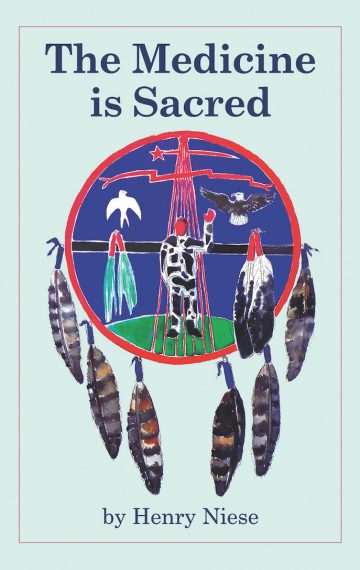Introduction by Wadrage Diana Osborne-Williams
Anyone seeking to understand the deeper meaning of the Sioux Nation Sundance—which centers on the most sacred piercing ritual in the Native world—will find revelation and guidance here. Henry Niese, who is entering his ninetieth year, provides a soulful testimony to the rigors and rewards of this SACRED practice. He escorts the reader through a host of healing ceremonies, where the supernatural occurs as readily as the natural, including the miraculous revival of a dying newborn child, and a cancer cure through a Sundancer’s sacrifice. The work concludes with observations on the role of the sacred path in everyday life, and how a non-linear perspective—a Native American way of seeing the world—may shake our very foundations. Henry Niese brings to the reader a unique experience, an insider’s view of the sacred as well as the ordinary day-to-day life in Indian country.
“This is the most powerful piece on the Native Americans I have ever read and deserves the widest circulation it can get. One of the encouraging signs of our times is mainline medicine’s recognition that it does not have all the answers, and, as a corollary, its willingness to pay serious attention to alternative modes of healing. It is in this spirit that I welcome Henry Niese’s book, The Medicine is Sacred.”
–Huston Smith, author of The World’s Religions, Forgotten Truth and A Seat at the Table
“A powerful journey into deep tradition. It opens door to ceremony which binds us together and bonds us to the Earth. It helps us to shed the idea of separateness and to recognize our one-ness with the universe. Honored Ancient Ones!! Our spirits soar as we walk in your shadow!”
–Grandmother Red Leaf, A Woman of the People
“In the 1980s American Indian spirituality, especially the Sundance, blossomed on the Lakota reservations in western South Dakota. Henry Niese in The Medicine is Sacred describes first-hand, his personal participation in numerous Sundance ceremonies over many years. He describes Lakota rituals in great detail, displaying his great love and devotion to Lakota religious tradition and the Lakota people, especially on the Rosebud reservation. His close personal association with Lakota medicine men and religious leaders like Chief Eagle Feather Schweigman, Moses Big Crow, Arthur Running Horse, Elmer Running, and others is described with great personal affection and openness. His down-to-earth descriptions, comments and insights will give the reader a true, in-depth, and at times chilling, insight into the great sacrifices and spiritual powers found in the Lakota Sundance and spirituality.”
— William Stolzman, author of The Pipe and Christ
Henry Niese reads at Malaprops:
